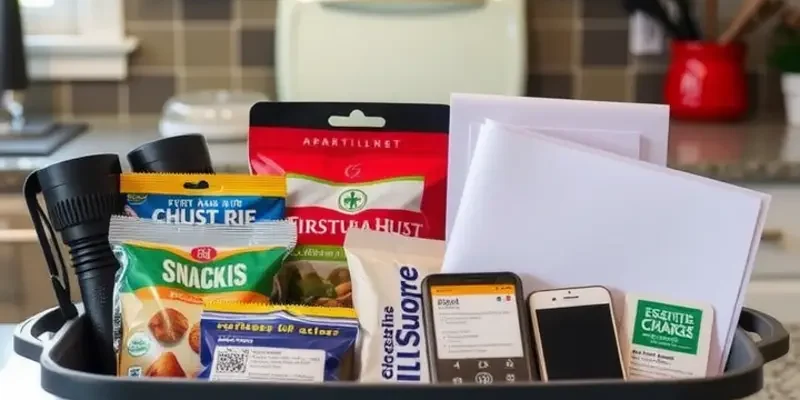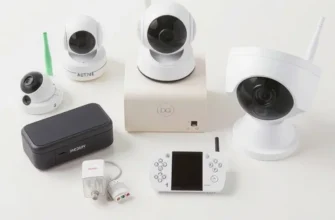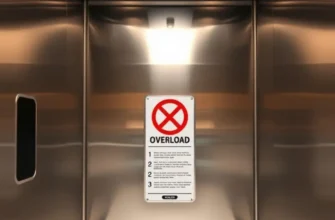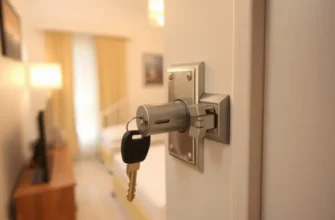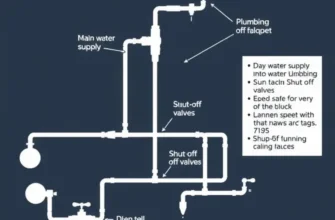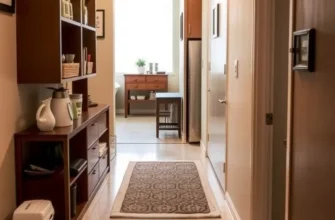Renting an apartment comes with unique challenges, especially regarding safety and unexpected emergencies. Preparing an emergency kit is a proactive approach that greatly enhances your peace of mind. Unlike homeownership, where you might have a substantial toolbox, renters often find themselves with limited control over maintenance and repairs. Creating a well-planned emergency kit caters to your immediate needs and ensures that you can address minor mishaps without hassle. In addition, having this kit ready can foster a sense of security, knowing that you’re prepared for various potential situations—from power outages and natural disasters to minor accidents. This guide simplifies the creation of a practical and effective emergency kit tailored for renters, focusing on essential items that prioritize safety and easy maintenance. With simple steps, you can ensure your living space is prepared to handle whatever may come your way.
Building Your Essential Emergency Kit

Creating a reliable emergency kit for your apartment is an essential step towards ensuring safety and security. A well-equipped kit covers various scenarios including natural disasters, prolonged power outages, and minor injuries. Focus on practicality and accessibility when assembling your kit, keeping in mind your unique living arrangements and individual needs.
Start with the basics: water and non-perishable food. Aim to have at least one gallon of water per person per day, with a minimum three-day supply. Non-perishable food items such as canned goods and granola bars should also cover at least three days. Remember to review expiration dates periodically and rotate supplies as necessary.
In terms of safety, include a first-aid kit with essentials like adhesive bandages, antiseptic wipes, and over-the-counter medications for common ailments. A flashlight with extra batteries, a battery-powered radio, and a multi-tool can significantly aid in emergency situations.
To address home security, a whistle can be useful for signaling, while a small fire extinguisher can help manage smaller fires. Additionally, copies of important documents, like identification and insurance papers, should be stored in a waterproof, portable container.
Personalize your kit with items based on your specific circumstances. If you have medical needs, ensure you have an adequate supply of necessary medications. Those with pets might consider including pet food and any necessary medicines for their animals.
Consider the logistics of storage and accessibility. Store your kit in a location that is easily accessible, such as a closet near the front door. Ensure every household member knows where it is and how to use its contents. Regularly check the kit to ensure items are up to date and functioning.
For additional peace of mind, you may explore how to enhance your apartment’s safety features. This could involve examining your electrical outlets for issues, as outlined in this article on electrical outlet safety, which can help prevent emergencies before they occur.
Creating an apartment emergency kit is a proactive step towards safeguarding your home and loved ones. By tailoring the kit to meet your specific needs and regularly maintaining it, you’ll ensure you’re prepared for the unexpected.
Staying Informed and Connected

In times of crisis, staying informed and maintaining communication are vital to ensuring not just your safety, but also the safety of your family and surrounding community. Digital resources and apps provide an essential lifeline during emergencies. Using reliable news apps or subscribing to official notifications from weather and local authorities will keep you updated in real-time. Consider setting notifications for emergency alerts on your phone, so you don’t miss critical information regardless of where you are.
Having a well-thought-out communication plan is crucial. This plan should include a specific meeting spot for your family in the event of a sudden evacuation and a list of emergency contacts. Each family member should have an easily accessible list of important phone numbers, perhaps saved in their phones under emergency contact lists or written on a card stored in the emergency kit. Furthermore, identify at least two people outside your immediate area who can serve as a contact point for updated information and for conveying messages family-wide, ensuring timely and efficient communication.
Incorporate group messaging apps into your communication plan to stay connected with family and friends. Many of these apps function reliably even when cellular networks are congested. This ensures everyone can check in, update their status, and share their locations if necessary. Investing time in exploring radio apps is also beneficial; they often provide access to both news and updates even when other forms of communication are unavailable.
Safety protocols might vary based on the type of emergency. In the case of a fire, having a dedicated fire escape plan with well-established routes and designated safe spaces should be practiced regularly with family members. During earthquakes, prioritize taking cover under sturdy furniture, and once the immediate danger has passed, connect with family members to relay your safety status. Furthermore, when anticipating severe weather such as hurricanes, utilize digital weather tracking apps to monitor storm paths and heed evacuation orders promptly.
For renters, understanding your building’s specific emergency protocols is equally important. Regularly review evacuation procedures and know where emergency exits are located. Apartment communities often conduct safety drills; participating in these can prevent panic and confusion during actual emergencies.
Finally, it’s essential to consider your apartment’s unique safety needs. Implementing safety measures such as securing heavy furniture can mitigate risks in situations like earthquakes. More information on safety measures can be found in resources like the home maintenance checklist for renters, which provides insights tailored to your living space.
By utilizing available technologies and implementing a comprehensive communication plan, you’ll create an effective environment for managing emergencies, helping not only in preserving your security but also in strengthening community resilience.
Final words
Having an emergency kit ready is key to ensuring safety and security as a renter. It provides a sense of preparedness that can significantly reduce stress in unexpected situations. By including essential items tailored to your needs and adding resources for real-time information and communication, you’re making a smart investment in your peace of mind. Remember, preparedness doesn’t just mean assembling supplies; it involves creating a solid plan for your safety and the well-being of those around you. Take the first step today and start building your emergency kit. It’s a simple yet powerful way to secure your apartment experience.

